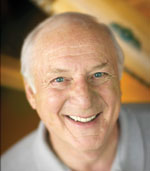Proficient Pilot
Dropping the bomb
 Mentioning certain types of military aircraft often conjures thoughts of single missions for which they were most famous. The North American B–25 Mitchell reminds us of the Doolittle Raid on Tokyo (April 18, 1942), and you cannot think of the Boeing B–29 Superfortress without being reminded of the role it played in America’s use of the atomic bomb to end World War II. The “Superfort” was the only airplane capable of performing that historic mission. So it was that upon completion of my feature article about the B–29 ( “The Lady has a History”), I thought it remiss not to include my thoughts about the atomic bombing of Hiroshima on August 6, 1945, and Nagasaki on August 9, 1945, the two most violent acts of war ever committed. Or were they?
Mentioning certain types of military aircraft often conjures thoughts of single missions for which they were most famous. The North American B–25 Mitchell reminds us of the Doolittle Raid on Tokyo (April 18, 1942), and you cannot think of the Boeing B–29 Superfortress without being reminded of the role it played in America’s use of the atomic bomb to end World War II. The “Superfort” was the only airplane capable of performing that historic mission. So it was that upon completion of my feature article about the B–29 ( “The Lady has a History”), I thought it remiss not to include my thoughts about the atomic bombing of Hiroshima on August 6, 1945, and Nagasaki on August 9, 1945, the two most violent acts of war ever committed. Or were they?
Perhaps the deadliest attack on Japan took place on March 10, 1945. During a single raid, 325 B–29s each delivered seven tons of incendiary bombs. Because of the 28-mph wind blowing over Tokyo that dark morning, thousands of fires developed into a firestorm and then into a fierce wave conflagration. This “tidal wave” of fire consumed 16 square miles of Tokyo and took more than 100,000 lives. (The bombing of Dresden, Germany, might have been more lethal, depending on which death toll one chooses to accept.) This and subsequent raids, however, did not force Japanese capitulation. (In June 1945 the Air Force began dropping leaflets that warned Japanese citizens to evacuate prior to subsequent bombings.)
Plans were underway to invade the Japanese home islands. The initial invasion, codenamed “Operation Olympic,” was to include 800,000 troops making a four-pronged assault on Kyushu on November 1, 1945. A second amphibious landing, “Operation Coronet,” was planned for Honshu five months later (April 1946) and would have involved more than 2 million Allied troops. The Japanese were preparing for invasion by arming its civilian population, mobilizing its schoolchildren, fortifying caves, constructing underground defenses, building “suicide air strips,” and so forth. It was reasonable to assume that Japan would defend its homeland with even greater tenacity and fanaticism than it did the Pacific islands, which required the sacrifice of so many brave Americans. Conservative estimates indicate that a conquest of the Japanese homeland by conventional means would have cost substantially more than a million Allied and Japanese lives. Significantly more Japanese would have been killed than died during the atomic bombings of Hiroshima and Nagasaki. It just would have taken longer.
The decision to use the atomic bomb was made jointly by President Harry S Truman and Prime Minister Winston Churchill. Another central figure in the mission was Col. Paul Tibbets, aircraft commander of the Enola Gay. (The airplane was named for his mother, Enola Gay Tibbets.) Tibbets believed that an atomic attack on Japan would end the war and save millions of lives in the process. Truman advised him after his flight to Hiroshima, “I’m the guy who sent you. If anybody gives you a hard time about it, refer them to me.” After witnessing with “shocked horror” the destructive power he unleashed from the belly of the Enola Gay, Tibbets returned from Hiroshima believing that the conflict was over. Not quite.
The Japanese minimized the loss of an entire city and refused to agree to unconditional surrender. Three days later, the second atomic bomb was delivered by another B–29, Bockscar. This was intended to imply that we had an endless supply. We didn’t, although a third bomb might have become available in September. The hostilities continued even after Nagasaki’s destruction, and additional B–29s were used to drop incendiaries, high explosives, and mines on Japanese targets. On August 15, 1945, the Japanese finally agreed to our terms of surrender. The killing was over.
Many have suggested that instead of attacking Hiroshima and Nagasaki with atomic weapons, the United States should have instead made a pre-announced detonation off the coast of Japan to convince the Japanese that further resistance was futile. However: 1) a fireball and towering cloud at sea might not have been sufficiently impressive; 2) such an announcement might have tempted the Japanese to make an attempt to destroy the bomb-carrying airplane before it could deploy its payload; 3) the bomb could have been an embarrassing dud; and 4) there were only two bombs available.
To this day, the subject of our having used atomic warfare remains contentious and controversial. When the Enola Gay’s fuselage was placed on exhibit at the Smithsonian’s National Air and Space Museum in 1995, three activists threw ash and human blood on the exhibit. This followed an earlier incident in which a protestor threw red paint over the gallery’s carpeting.
It bothered Tibbets that many considered the atomic bomb unnecessarily barbaric. “What they didn’t understand,” he said, “was that the bomb was not dropped in anger. We did it because we were determined to stop the killing. It was about the lives saved, not the ones lost.” Tibbets’ last will and testament specified that he not be buried for fear that his gravesite would serve as a lightning rod for anti-nuclear activists. He arranged instead for his ashes to be scattered over the English Channel. May he rest in peace.


